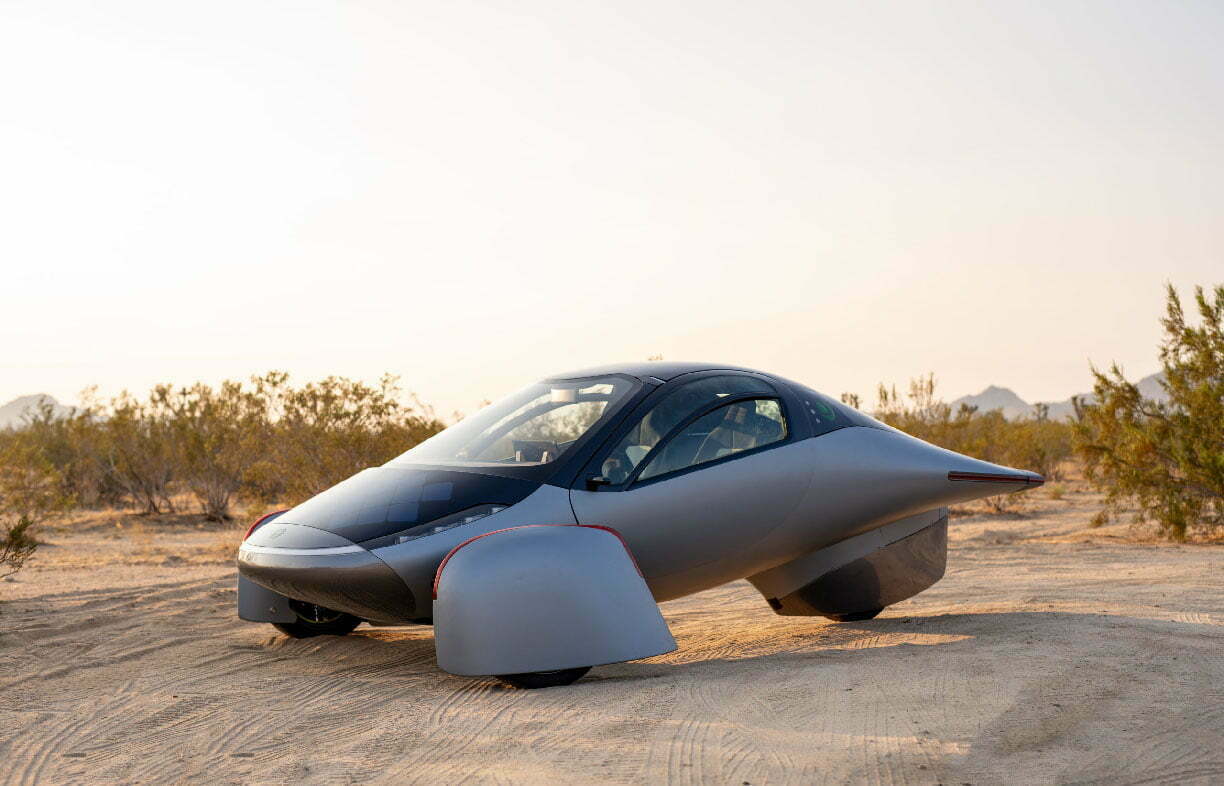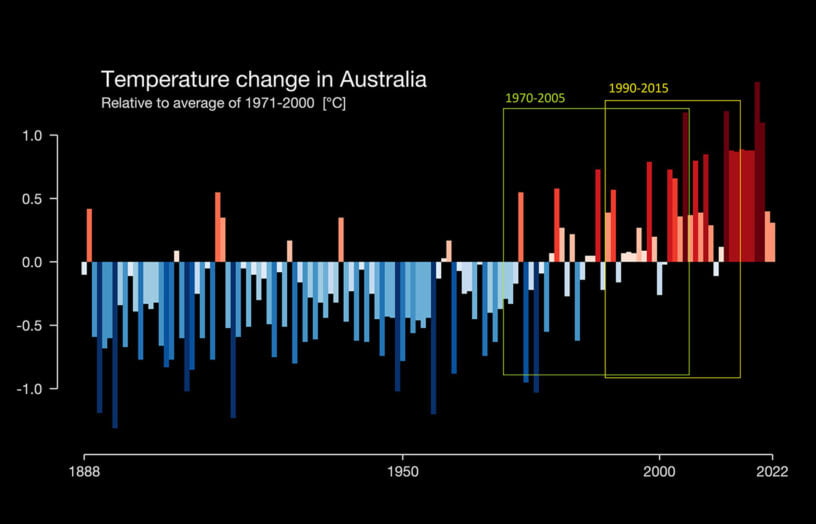Biofuel vs battery

John Hermans gives his opinion on the best power source for electric vehicles.
In early 2012, I wrote an article for Renew about the virtues of using waste vegetable oil (WVO) as a free alternative and renewable fuel supply for my van.
After 15 years of using the waste product fuel, I now have a different opinion. What has changed in that time—and what are my options today for low-cost, low-emissions travel?
I am the sole mechanic for my Toyota HiAce van, and I have built and perfected a fuel processing plant that enables bulk WVO to be processed to a high level with constant supply. The used oil is free.
During my 15 years of using WVO, I have owned two Toyota HiAce vans. In that period, I have never gone back to a commercial-fuel bowser. Each van has travelled around 160,000 km on WVO.
320,000 km of travel in my HiAce vans equates to around 50,000 L of fuel burnt in this 15-year period—my annual driving distance being 20,000 km, which is typical for an Australian vehicle.
This shows just how much pollution and GHG emissions one person emits. Now multiply that across our country and the entire planet of ICE (internal combustion engine) vehicle owners!
Global fossil petroleum usage is at 5800 million tonnes per year! For comparison, global iron ore extraction is 2500 million tonnes per year, and lithium for EV battery manufacture is 0.4 million tonnes per year. Can you see the problem here?
The multiple issues associated with using biofuel needs highlighting. The discourse around biofuels often implies that little or no CO2 emissions are involved. I find this misleading and alarming. It is the subsequent burning of this fuel in the ICE that leads to micro soot particles, nitrogen oxide gases and carbon monoxide emissions, amongst other poisons coming from the tailpipe. Not to mention the recent finding that far more people die from the toxic emissions from ICE cars than are killed in road accidents.
In 2022, Dr T. Alcock of Nottingham University conducted a broad study of 6000 vegetable oil producers in 38 countries. It was found that the lifecycle of CO2 emissions from vegetable oil is comparable to that of fossil fuel petroleum.
When taking into consideration all the land use and growth inputs required to farm rapeseed (canola) oil in Australia (1.4 million litres per year), its potential to replace Australia’s current fossil petroleum consumption (60 million litres per year) in order to minimise CO2 emissions is bleak, if not impossible. It would take more than another planet’s worth of additional broadacre farmland to come anywhere near being able to substitute biofuels with fossil diesel.
In the US, 81 million acres of prime agricultural land is used to grow corn for ethanol production. This supplies the US—a country with excessively oversized SUV and pickup trucks—with an equivalent additional 10% of available gasoline. But researchers from the US National Academy of Sciences have recently determined that the carbon intensity of corn ethanol produced under the Renewable Fuel Standard is no less than gasoline and likely at least 25% higher. Just a small efficiency gain would negate this whole industry, let alone the EV transition. Biofuels production is too inefficient to continue in a Climate Emergency.
While burning fossil diesel leads to a CO2 release of 2.7 kg per litre (and an additional 2.5 kg per litre for refining and distribution), the equivalent burning of vegetable oil results in an emissions median value of 3.8 kg of CO2 per litre. That’s not including all the other nasty stuff that comes with high-temperature compression ignition engines.
Despite a century of refinements, ICE engines are appallingly inefficient and polluting. Both petrol and diesel still only manage around 30% efficiency, with the other 70% pushing air and being expelled as waste heat.
There is one aspect of using WVO as fuel that gives it a degree of sustainability. It is a waste product, and almost wholly destined for ICE diesel use. So rather than poison in, poison out, it’s just a case of poison out. But we only get to recycle it once!
Let’s look at biofuels from another perspective. The conversion efficiency of photosynthesis to sugars and then to triglyceride plant oils has an unbelievably low value of below 1% (total insolation to converted triglyceride). The means by which cropping manages to overcome this massively low rate of conversion is by growing the crops in vast fields called broadacres.
An east-west drive across the state of Victoria in the springtime gives a clear indication of how widely the golden flowering rapeseed (canola) is grown, albeit mostly for use as a food ingredient.
Now, consider the conversion efficiency of today’s solar PV panels, which is currently over 20% and rising, and whose energy collection goes on throughout the entire year.
The comparison of these two ‘energy collecting options’ is astoundingly significant, when using data supplied from those relevant industries: the production rate of processed canola oil being around 700 L per Hectare on a four-month cropping cycle, and solar panel-derived electrical energy being over 1 million kWh or 1 GWh in the same period.
If you used the 700 L of canola oil to run a diesel generator (less fuel usage for growing the crop), it would deliver approximately 1575 kWh. The solar array does more than just shine here; it produces an alarming 635 times the energy of the cultivated canola crop. There are many variables that will skew this outcome both ways, so I have done my best to average those inputs.
An EV alternative
Our household has also owned an all-electric Nissan Leaf for four years. We are completely off-grid and use only solar panels to charge that vehicle. The charging and maintenance procedures for our Leaf EV are a joy in comparison to the dirty HiAce ICE motor that needs constant maintenance and messy fuel processing.
Despite my ability to work on my HiAce vehicle and do its fuel processing, with the knowledge of what an all-electric EV option has to offer, it is very off-putting spending time keeping the WVO HiAce van maintained. The main benefit is its range, which the Nissan Leaf lacks.
My options for an EV most like the HiAce van require two seats and a luggage area, for which choices are few, but technology has evolved.
I am a reservation holder of an Aptera (an electric car) to be built in California this year. The vehicle, with two seats and room for a bed in its rear, is my preferred option to replace the HiAce van. It is a much smaller vehicle, but that is a compromise we are happy to make. Much of our unsustainable world has to do with the over-consumption of resources in the form of excessively large vehicles, including ‘houses on wheels’.

The Aptera solar electric vehicle is capable of a 1000 km range with a 60 kWh battery. With recharge times of 30 minutes to 80%, there is little inconvenience when distance touring.
In the development of lithium-ion batteries, there has been much discussion about the vastly improving energy density of batteries in kWh/L and kWh/kg. The Aptera battery has close to 0.72 kWh/L in comparison to the energy density of diesel fuel, which is 10 kWh per litre. Clearly there is a huge difference here, 14 times, and yet this newly-developed EV can deliver a driving range of 1000 km.
By modifying my Veggie Van and replacing the original fuel tank with a much larger one which includes the reserve biodiesel tank, I have a range of 1800 km, with a total fuel tank volume of 250 litres, collecting and processing considered. The Aptera battery volume is around 83 litres. The real answer to this discrepancy has to do with the terrible efficiency of the ICE engine and the vehicle’s poor aerodynamics.
The Aptera has a coefficient of drag (Cd) of 0.3 (a Tesla model 3 is 0.23). As well as being half the weight of most other EV and ICE cars, it is able to drive itself forward at 100km/hr using 63Wh/km (a Tesla Model 3 is 166Wh/km).
If we go back to that example of one Ha of PV panels collecting electrical energy for a period of four months, this 1GWhr of energy would drive an Aptera a distance of 17 million kilometres (or half that distance for a regular EV).
The 1Ha crop of canola oil which produced 700L of vegetable oil in that same period would enable my HiAce diesel van to travel just 5000km! The difference between these two options is 3400 times!
The age of new all-electric EVs has mostly come about as a result of significant increases in battery energy density. Reducing drag and vehicle mass are equally important.
I have highlighted some of the negative implications of ICE usage globally, including: poor efficiency; CO2 emissions; toxic gas emissions leading to millions of human deaths; complex, dirty and costly maintenance but other hidden issues including dwindling supply, increasing costs, water usage and pollution, motor noise, energy reliance from other countries, crude and refined oil spillage, international wars over supply security and military usage of petroleum to maintain supply.
Lovers of ICE are in for a painful but swift withdrawal.
Link to the Nottingham university study: rb.gy/iw7y3
Link to The Proceedings of the National Academy of Sciences: doi.org/10.1073/pnas.2101084119
Further reading
 Efficient homes
Efficient homes
Building for a changing climate
Are we building homes for the future, or for the past? Rob McLeod investigates how climate change is impacting home energy ratings and the way we build our homes.
Read more Efficient homes
Efficient homes
Gas and our health
Dr Ben Ewald uncovers the health effects of gas in the home.
Read more

